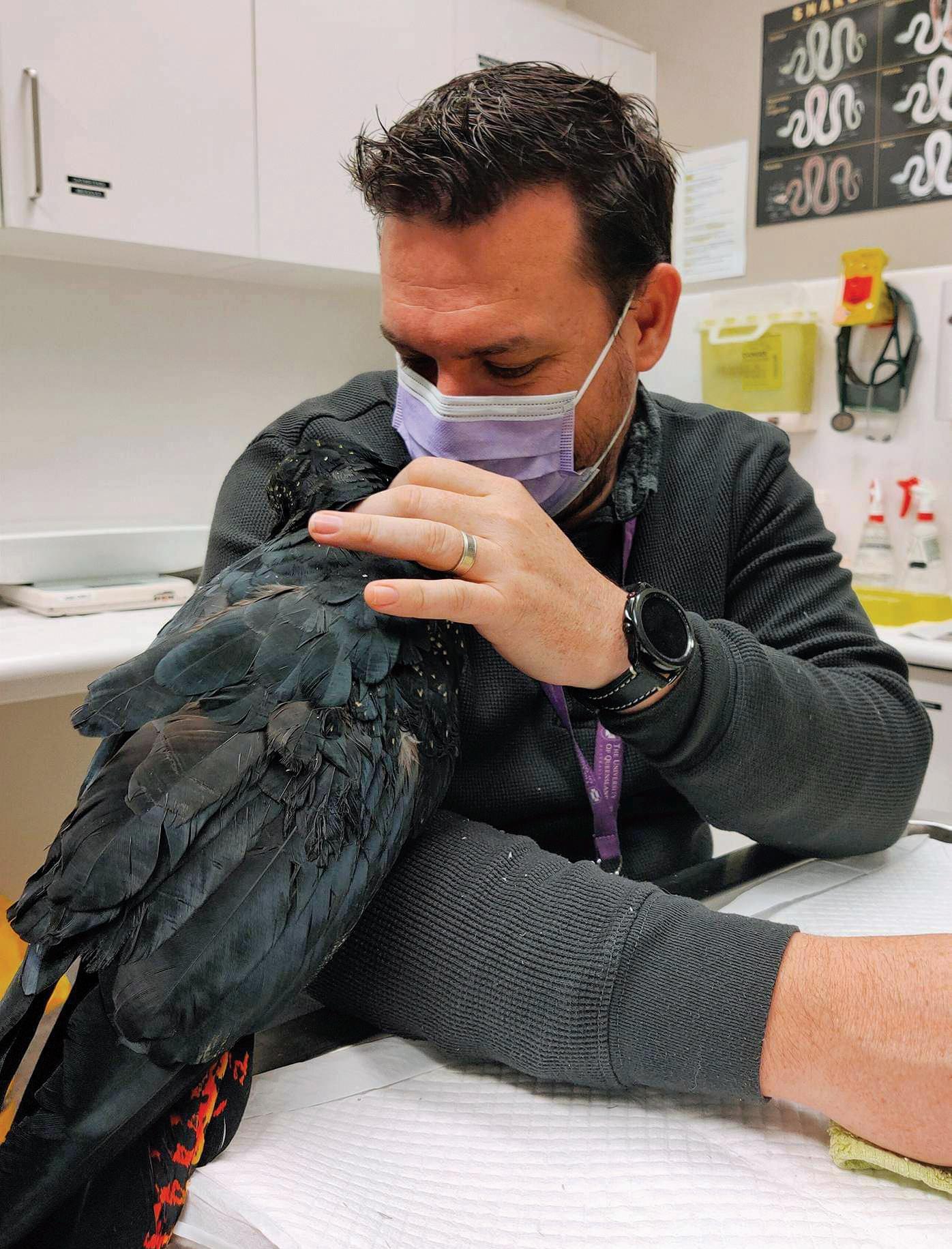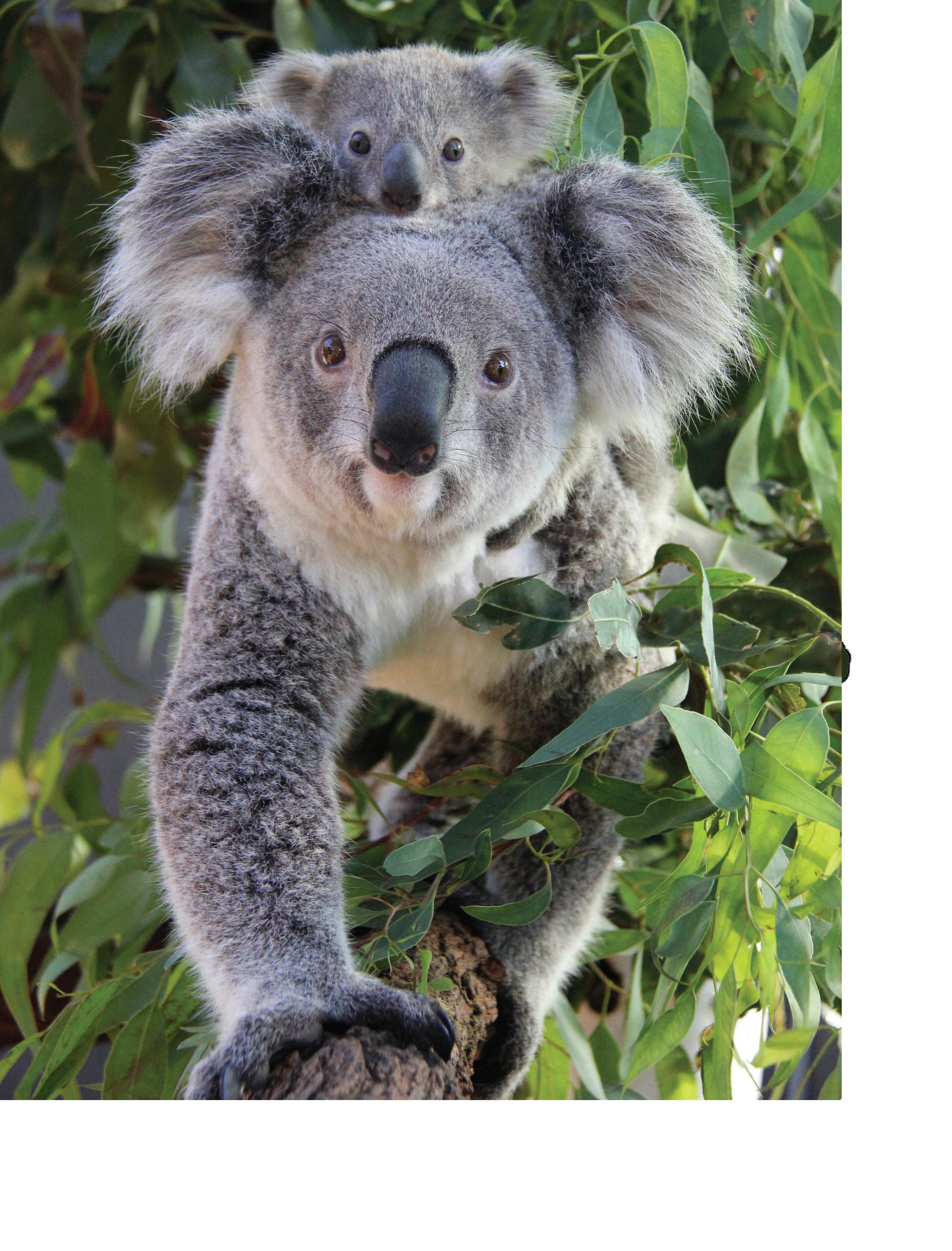
6 minute read
Congratulations to new Vet Tech Specialists
Brittney Bignell
BAppSci (Vet Tech) RVT AFHEA VTS(DI) We asked Brittney a few questions on her achievement Congratulations on becoming the first Australian to gain your Vet Tech Specialist in Diagnostic Imaging. You are the only non-North American and one of less than 20 worldwide to gain this speciality. How does it feel? It feels great to be part of what I hope is a growing movement! Diagnostic imaging is an area of vet med growing at a rapid speed, and it only makes sense that we should have specialised nurses and techs to run these machines to acquire these high quality images. As our equipment is on par with human medicine, many hospitals are choosing to hire human radiographers, but apart from the licensing hurdles, there is no reason why we can’t be training our own people. I am passionate about diagnostic imaging, both as subject matter and as an area of veterinary medicine that desperately needs more nurses and techs. Tell us about what you had to do to gain this VTS? To sit for the VTS DI, I required 10,000 hours (or 5 years) in practice with at least 75% of that being imaging-specific work, to have 2 VTS or veterinary radiologist mentors and 40 hours of imaging CE in the years immediately prior. The application required the submission of 50 case logs and 6 detailed case reports covering an extensive skills list that required mastering. The skills included radiography, CT, MRI, ultrasound and scintigraphy across small and large animals. Once this application was accepted, the final step was an examination. To complete my skills list, case logs and study, I worked at 2 specialist clinics across multiple species and departments. What made you decide to undertake this further study? When I started my role as a vet tech in imaging, I struggled to find other people in similar roles. I was the first in my clinic and most clinics with advanced modalities seemed to be hiring human diagnostic radiographers for image acquisition. Nurses in clinics who were taking most of the X-rays were juggling so much else they had little time to dedicate to specifically imaging. I also found it hard to
find imaging-specific CE and wanted to be part of the change. I was fortunate to work alongside a diagnostic radiographer who taught me so much and I fell in love with imaging early on, pursuing additional licensing and teaching opportunities at every chance. As a person who loves a challenge, learning new things, and still trying to find my niche in vet med, this constantly evolving specialty was a great fit for me. When the diagnostic imaging academy was finally officially recognised by NAVTA and considering the limited Australian qualifications for techs for clinical specialisation, it seemed like the logical next step. What advice do you have for those interested in furthering their career? It sounds very cheesy but find what you love and pursue it even when you’re not sure where it will lead, or the pathway is unclear. The industry is expanding and developing so quickly that the options for specialisation feel almost endless, and people who love and are good at what they do will always be in demand. When I started on my DI pathway, there were no vet nurses or techs licensed for CT in Queensland. We didn’t have an MRI in my clinic and all I was doing was radiographing stifles, chests and abdomens, day in and day out. I put in the hours, jumped at every opportunity to expand my skills, relentlessly hounded QLD Health for further radiation licensing and everything else fell into place.
Congratulations to new Vet Tech Specialists
Gary Fitzgerald
BAppSc (Veterinary Technology), Cert IV VN, VTS (Exotic Companion Animal) RVN, RVT Veterinary nurses and technicians are a very talented bunch! Gary Fitzgerald, a current director on the Veterinary Nursing Council of Australia’s (VNCA) Board of Directors and the 2020 VNCA Nurse/Technician of the Year, is a shining example! Gary, Practice Manager at The University of Queensland’s UQ Vets Veterinary Teaching Hospital, attained Veterinary Technician Specialist certification on 27 June this year after meeting the rigorous requirements set by the Academy of Veterinary Technicians in Clinical Practice (AVTCP) in the United States of America. AVTCP is modelled after the American Veterinary Medical Association accredited college, the American Board of Veterinary Practitioners (ABVP). Gary’s subspeciality in this academy is Clinical Practice (Exotic Companion Animal). Completing the specialisation required a minimum of five years’ prior clinical experience, a minimum of 50 hours advanced continuing professional development that is RACE certified (or equivalent) and delivered by other specialists, 50–75 case studies, four case reports and mastery of skills linked to the case log, plus a written examination. Gary is the only technician to hold this qualification in the southern hemisphere and there are only 11 technicians worldwide with this qualification. Congratulations to Gary on such an outstanding achievement! Gary is at the forefront of advancing the professional status of veterinary nursing in Australia, not only with this specialisation, but he has also co-authored a book on nursing the reptile patient, and published articles on exotics in the Australian Veterinary Nurse Journal, and in The Veterinary Nurse, a peer-reviewed international journal. Gary regularly presents at VNCA conferences, and in 2019 he was invited to present at the VMX Veterinary Meeting & Expo in Orlando, Florida, which is the largest veterinary conference in the world with over 17,000 delegates. In between these professional activities, Gary finds time to help train and mentor veterinary technology students and handles the occasional venomous brown snake in a clinical capacity at the UQ Vets Veterinary Teaching Hospital. As a qualified veterinary nurse and veterinary technician, Gary has dual AVNAT registration: leading by example in the pursuit of mandatory registration of veterinary nurses and technicians in Australia!
If you could give other nurses one piece of advice or a tip you have learnt, what would it be? Your most valuable asset will always be your support team. At UQ, I am blessed to be surrounded by an incredible group of techs and nurses passionate about both personal development and patient outcomes. This means gold standard care with gold standard people, always pushing you to do your best. I never would have pursued this specialty without the support of my team. How do you keep a work/life balance? Outside of work, I have a great network of family friends who keep me busy, along with whatever hobby of the moment I’m fixated on. Right now, that means crochet gifts for everyone, including my ever-so-patient dog and cat that keep me sane and focused on what’s important. I am also fortunate to have a supportive partner who is also in the industry. She knows when to let me ramble on about MRI physics for 45 minutes and when to help me switch my work brain off. It’s so easy to burn yourself out in this industry and I feel very strongly about maintaining a healthy work/ life balance.
















